[[“value”:”
Thank you for reading this post, don't forget to follow and signup for notifications!
David Higginbotham
Every gun deserves to be suppressed. While some pistols require additional considerations, such as a Nielsen device, there’s a misconception that suppressing a handgun is inherently more complicated than a rifle. It isn’t. There is more nuance, perhaps, but the extra effort is worth it for the sound suppression.
Almost everyone I know who shoots suppressed began their journey by suppressing a rifle. I started, ages ago, shooting suppressed with a SilencerCo Sparrow on my Ruger 10/22 — the price was right, the barrel was threaded, and rimfire ammo was so common that I literally used a brick of it as a doorstop.
Starting simple is often best. A narrow direct-thread suppressor is easy to work with, but some handguns can be more challenging. What should you take into consideration before you choose your suppressor? In this definitive guide, I’ll break down everything you need to know.
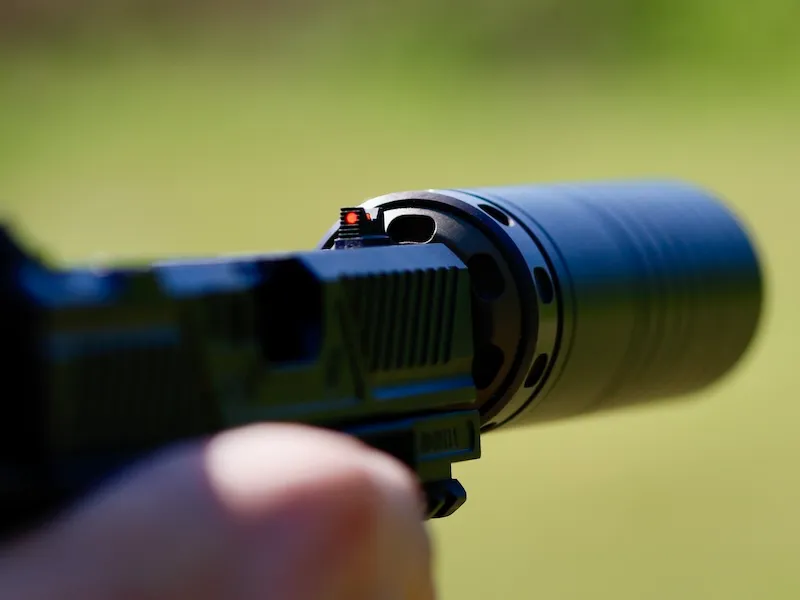
1. Do You Have a Threaded Barrel?
If your answer is yes, you’re ahead of the game. It is all but impossible to attach a silencer without a threaded barrel.
Almost all centerfire handguns sold in the United States come with factory barrels that sit close to flush with the slide. Finding pistols with threaded barrels, however, is easier now than ever.
And if your gun falls into what I’d call “the mainstream” category, you can also pony up for a threaded barrel as a replacement. SilencerCo makes them for many models and in varied thread pitches. Other aftermarket parts makers, too, will typically have a niche—like the P365 family, or the GLOCK 9mms—offering a wide array of options like unique fluting and even rainbow colors if that’s your style.
In almost all cases, these parts are modular. Simply drop one into the gun and test it out. An aftermarket barrel will rarely introduce functionality issues in a pistol. I’ve personally swapped out many and never had a single issue that a couple of magazines of typical wear haven’t smoothed out.
Here’s an easy rule of thumb: while mainstream manufacturers are catching on, factory-threaded barrels are still easier to find on the higher end of the price spectrum.
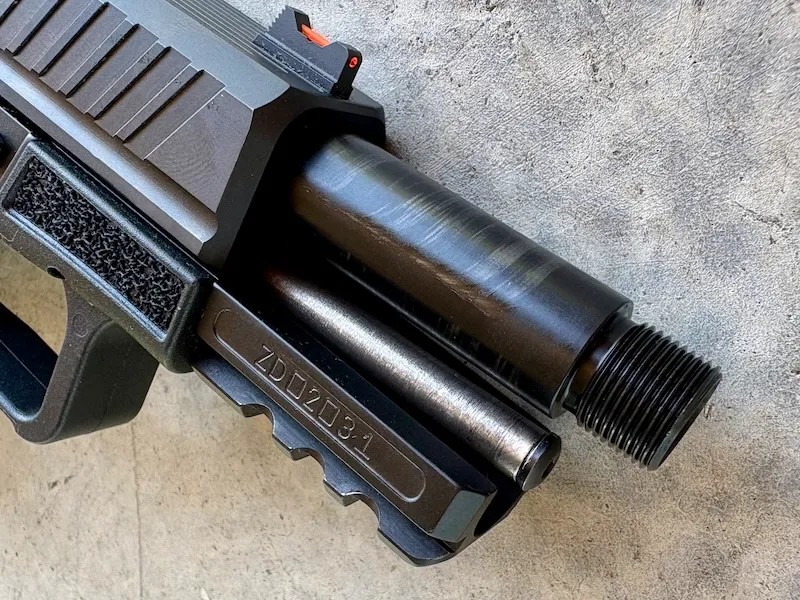
2. Will You Need a Nielsen Device?
If you’re suppressing a centerfire handgun, the answer is likely yes. The easiest way to check is to rack the slide, lock it open, and see if the barrel tips up even slightly. Rotary barrels (now very uncommon) and fixed barrels — like those on the PPK and some other small-caliber pistols — won’t require a Nielsen Device.
It’s worth understanding how a Nielsen Device works. The basic premise is simple: when the gun fires, both the barrel and slide begin moving rearward. The barrel then stops while the slide continues, opening a gap large enough to eject the spent casing.
Adding a suppressor to the barrel can add enough mass to interfere with this movement, potentially causing the action to grind to a halt. The Nielsen Device sits between the suppressor and the barrel and contains a heavy spring. When the gun fires, the barrel moves backward, compressing the spring, while the suppressor body remains momentarily stationary.
By allowing the barrel to move normally, the Nielsen Device helps ensure the gun cycles reliably.
With some underpowered rounds, like subsonic .22 LR, the action may still fail to cycle — but you won’t need a Nielsen Device for .22 LR anyway, since there isn’t enough force to cause a problem.
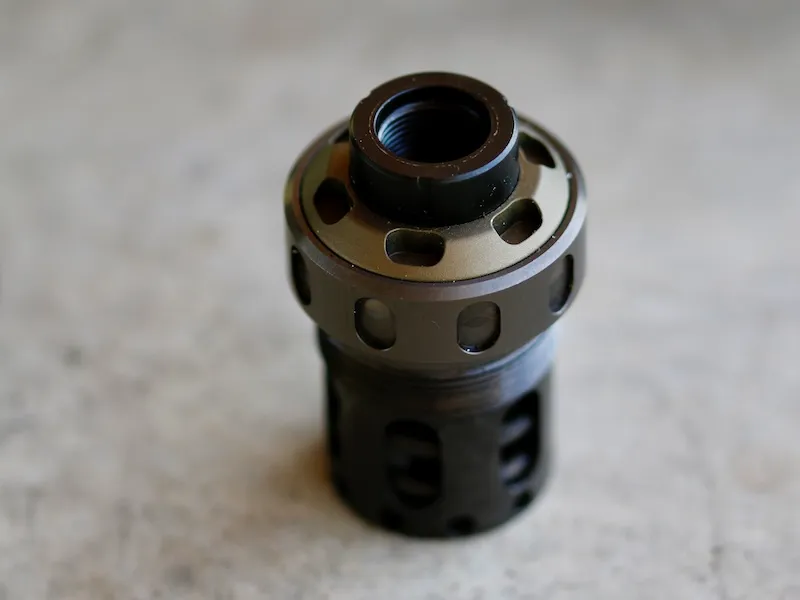
3. Will You Be Able to See Your Sights?
The first thing to consider is whether your sights will remain visible once a suppressor is installed. Those mainstream guns that I was discussing earlier can be problematic, even with a threaded barrel. The best scenario is a combination of tall iron sights, and reliable red dot, and a suppressor.
Some suppressor designs help mitigate sight issues. For example, SilencerCo’s Osprey Series lowers the internal volume of the suppressor below the bore’s centerline, reducing interference with iron sights. Cylindrical models, like the Spectre 9, may still require taller front sights, but adding a reliable red dot often solves the problem entirely.
Sights are generally easy to swap on most handguns. Exceptions exist, such as the Beretta 92 series, where the front sight is integral to the slide, making modifications more difficult. That said, using slightly shorter iron sights isn’t impossible—but the target may be partially obscured down range.
Adding a red dot is much easier now than it was a decade ago. Almost every handgun, and even some revolvers, are red dot ready. In most cases, dots are high enough to see clearly over a Spectre 9 suppressor.
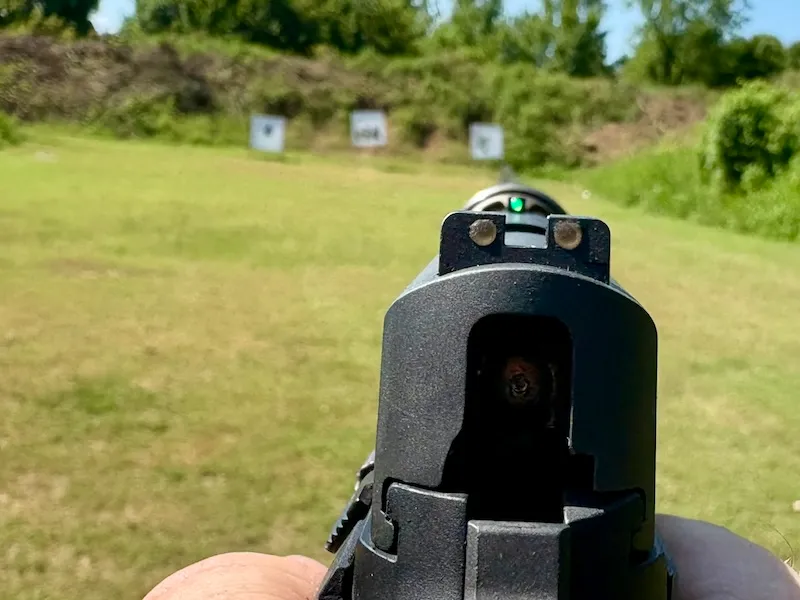
4. How Easy Is It to Find Subsonic Ammunition?
Finding subsonic ammunition is another story altogether. You will almost always pay more for subsonic than you will for bog-standard ball ammo, but the price is typically worth it.
Subsonic rimfire is the easiest to find in gun stores. The underpowered .22LR rounds are stupid quiet, but not powerful enough to cycle most actions. This, again, isn’t that bad. My old Buckmark runs like a bolt action, but when combined with my Sparrow, it is practically Hollywood quiet.
9mm is a bit trickier. While some makers try to pull back on the powder, most simply increase the grain weight of the bullet to slow it below the sound barrier. Look for 147 grain 9mm. It will typically be good for suppressor use and has the added benefit of being ideal for shooting steel.
.45 ACP is the easiest case. Most of these are slow to begin with. When in doubt, run heavy.
To be crystal clear, you don’t have to shoot subsonic ammo to enjoy the benefits of a silencer. That said, it does amplify sound suppression— if you’ll allow me that paradox.

5: How Easy Will It Be to Holster?
Holstering a suppressed handgun isn’t as straightforward as the other considerations. A suppressor makes the gun wider, longer, and — after a few rounds — hotter than the handgun itself. Some solid holster companies are working on solutions that will allow for a suppressed firearm to be holstered as easily as any standard handgun, but progress is slow.
The reason is simple: suppressors get hot. While there are still good leather holsters on the market, most are injection molded or thermoformed plastics. Holstering a cold suppressor, well, that’s a no-brainer. But once it gets hot, caution is required.
If this is a consideration, I’d suggest looking at ways to holster the firearm and carry the suppressor. There are solid options that allow for a suppressor in a pouch to be carried on anything with MOLLE or PALS. It has long been a practice of long-range hunters and shooters—anyone with the extra time needed to set up a solid shot at distance.
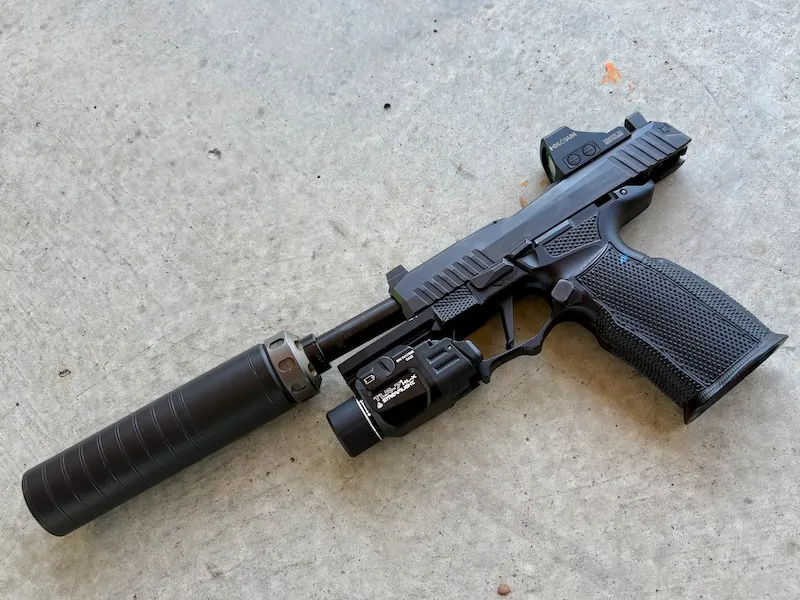
Bonus Consideration: Tools, Planning, and Gun Selection
While these five points cover the basics, I always make sure I have the right tools for each suppressor. This applies to all types of guns, not just handguns. Rimfire cans, for example, tend to get dirty in ways that centerfire suppressors don’t—so having cleaning supplies at the ready and tools for disassembly will always help.
The bigger considerations come long before you even own a suppressor. When I think about what guns I might add to the permanent collection, I know precisely what I’m after. Sure, there are some safe-queens and old antiques that I won’t ever shoot suppressed. But my working guns are an entirely different story.
Even my EDC pistol has a threaded barrel now. I carry it AIWB, but it gets suppressed frequently. I naturally gravitate toward guns with taller sights, and I’ve tested nearly every red dot mounting system available. Even if I don’t use a red dot, I like having the option.
Planning ahead, even when you are shopping for guns, simplifies the process later. When the time comes to add a suppressor, you’ll already know what works, what fits, and what makes the most sense.
David Higginbotham
The post Pistol Suppressor Basics: 5 Key Considerations for Success appeared first on SilencerCo.
“]]



